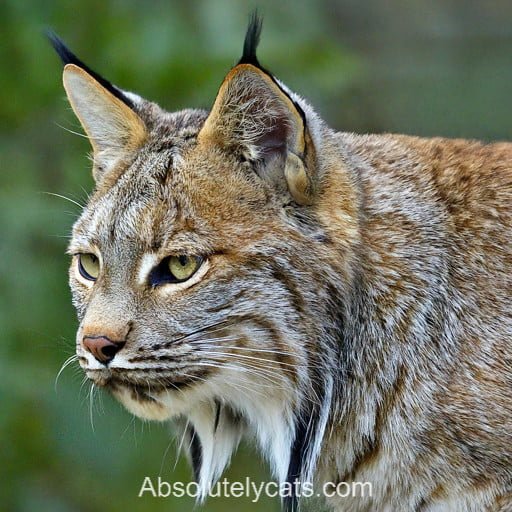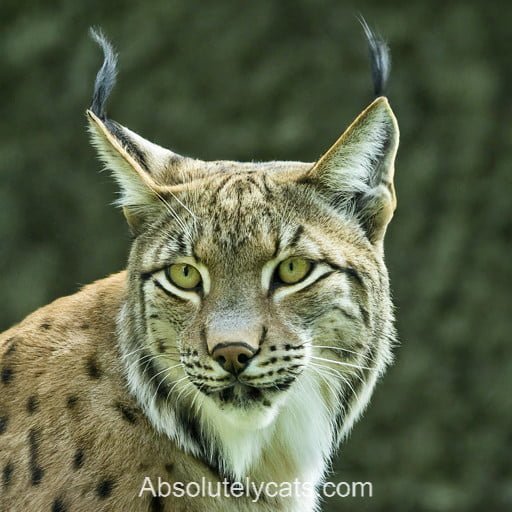
Welcome to our guide on the majestic American Lynx Cat. With its distinctive tufted ears and beautiful spotted coat, the American Lynx is a fascinating creature that roams the forests of North America.
As we delve into the world of the American Lynx Cat, we’ll uncover its unique characteristics, behaviors, and habitat. From its hunting prowess to its elusive nature, there’s much to learn about this captivating feline.
Join us on this journey as we explore the world of the American Lynx Cat and gain a deeper understanding of this iconic predator that roams the wild landscapes of North America.
Overview of the American Lynx Cat
The American Lynx Cat, also known as the Canada Lynx, is a fascinating wild cat species native to North America. Here are some key points to help you get better acquainted with this majestic feline:
- Physical Characteristics: The American Lynx Cat is easily recognizable by its distinctive tufted ears, spotted coat, and short tail.
- Habitat: These elusive predators are commonly found in dense forests and mountainous regions across North America, especially in countries like the United States and Canada.
- Diet: They primarily feed on small mammals, such as hares and squirrels, making them skilled hunters in their natural environment.
When it comes to understanding the American Lynx Cat, it’s essential to delve deeper into its unique behaviors and remarkable adaptations. Let’s continue our exploration of this iconic predator.
Physical Characteristics
When it comes to American Lynx Cats, there are key physical traits that distinguish them from other species. Here are some noteworthy characteristics that define these majestic wild cats:
- Size: American Lynx Cats are medium-sized felines, with males typically weighing around 18-24 pounds and females weighing slightly less.
- Appearance: They are easily recognized by their distinctive features, including tufted ears and a short bobbed tail. Their thick fur varies in color from shades of grey to reddish-brown, helping them blend into their wooded surroundings.
- Paws: These cats have large, padded paws that act like snowshoes, enabling them to navigate snowy terrains with ease.
- Eyesight: Known for their keen eyesight, American Lynx Cats have yellow-brown eyes with round pupils, allowing them to spot prey even in low light conditions.
- Facial Ruff: A defining characteristic of this species is the facial ruff, which are the longer fur patches around their face resembling a beard.
- Legs and Body: They have long legs relative to their body size, which aids in agility and hunting prowess. Their bodies are stocky and well-adapted for traversing rugged terrains.
Understanding these physical traits is crucial in appreciating how American Lynx Cats are uniquely suited to their environment and hunting lifestyle.
Habitat and Distribution
When it comes to American Lynx Cats, they primarily inhabit forested areas across North America. These elusive creatures prefer dense forests with plenty of undergrowth to help them conceal their movements and blend in with their surroundings. From the subarctic regions of Alaska and Canada to the rocky mountainous areas and mixed deciduous-coniferous forests of the Pacific Northwest, American Lynx Cats have a diverse range of habitats.
One of the key characteristics of their preferred habitat is the presence of dense thickets and low-lying vegetation that allow them to stalk their prey unseen. Snowy terrains are also favored, as American Lynx Cats excel in these environments, thanks to their large padded paws that act as natural snowshoes. These adaptable felines have been known to thrive in various environments, from cold northern forests to mountainous regions and even southern swamps and deserts.
Distribution-wise, American Lynx Cats can be found across continental North America, with different subspecies occupying specific regions. The Canadian Lynx is more common in Canada, while the Bobcat is found in areas ranging from Canada to Mexico. The Iberian lynx, a separate species, is exclusive to the Iberian Peninsula.
In essence, recognizing the preferred habitats and vast distribution of American Lynx Cats offers us a deeper understanding of how these majestic felines navigate and thrive in various environments across North America.
Hunting Behavior
When it comes to hunting, American Lynx Cats are skilled predators with adaptations that make them excellent hunters in various environments. They primarily prey on snowshoe hares, which make up a significant portion of their diet. These cats utilize their keen senses of hearing and sight to detect the subtle movements of their prey in the dense undergrowth where they typically hunt.
American Lynx Cats are known for their patience and stealth when stalking their prey. They rely on their exceptional camouflage and slow, cautious movements to get within striking distance without alerting potential prey. Once in position, they pounce swiftly, using their sharp retractable claws to grasp the unsuspecting target with precision and force.
Their hunting techniques are well-adapted to various terrains, allowing them to succeed in environments ranging from snowy landscapes to dense forests. American Lynx Cats are also known to be opportunistic hunters, preying on small mammals like squirrels and rodents when the opportunity presents itself. This versatility in hunting behavior contributes to their ability to survive and thrive in a wide range of habitats across North America.
Conservation Status
American Lynx Cats are currently classified as “Least Concern” on the IUCN Red List. Despite this relatively favorable status, certain populations face threats primarily due to habitat loss and fragmentation. As human activities continue to encroach upon their natural habitats, these elusive felines are at risk of losing crucial territories for hunting and breeding. Conservation efforts, including the establishment of protected areas and habitat restoration programs, play a vital role in safeguarding the future of American Lynx Cats.
By prioritizing the protection of natural landscapes crucial to the American Lynx Cat’s survival, we can collectively contribute to ensuring the long-term viability of this iconic species in the wild.
Conclusion
It’s imperative that we continue to prioritize conservation efforts for American Lynx Cats. Despite their current “Least Concern” status, these majestic creatures face significant threats like habitat loss. By establishing protected areas, restoring habitats, and monitoring populations, we can ensure a sustainable future for these felines.
Our collective actions in raising awareness and implementing conservation measures are crucial for preserving the unique ecosystems where the American Lynx Cats thrive. Let’s work together to safeguard their habitats and secure the long-term survival of this iconic species in the wild.

Tammy is the passionate cat enthusiast behind Absolutely Cats. Her journey began with a childhood filled with furry companions, leading her to advocate for cat well-being and a connoisseur of all things feline. Tammy’s dedication to the world of cats is evident in every article, guide, and review she pens.






